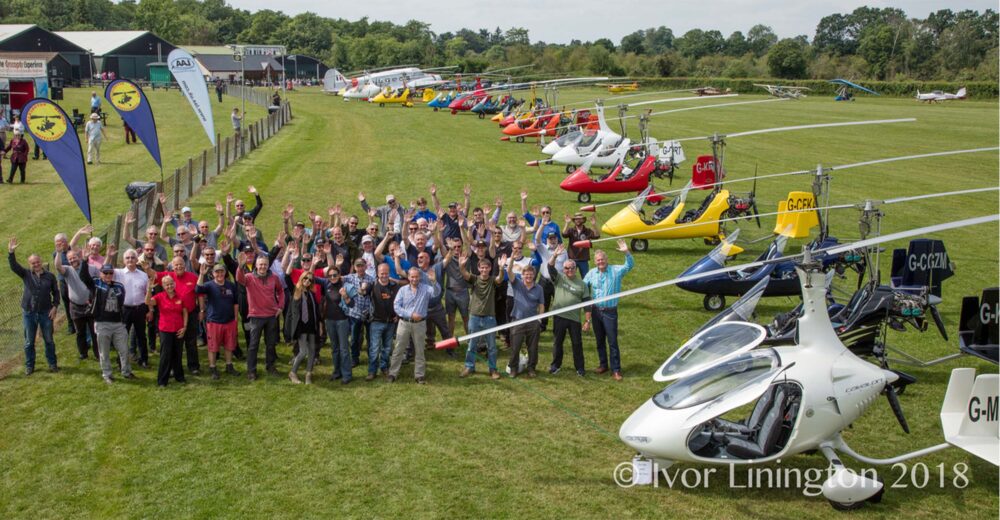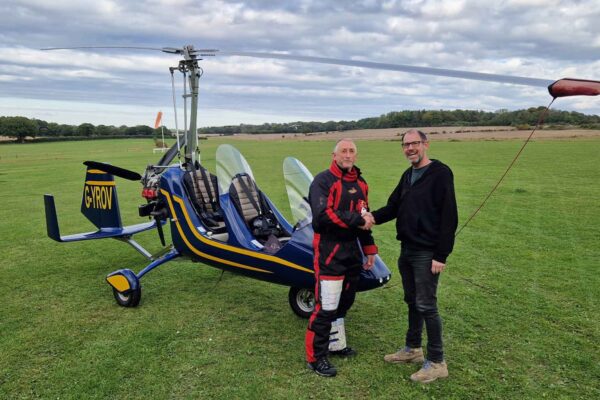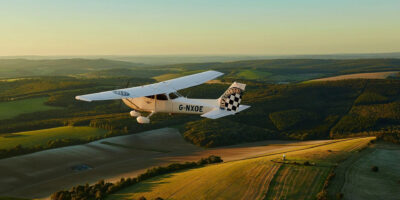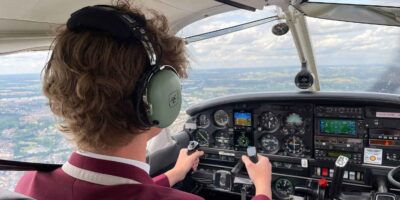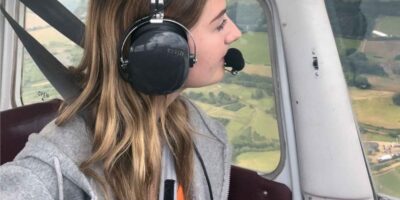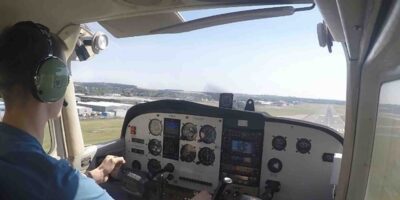I am old enough (and I’m not that old) to remember the days when gyroplanes were a niche within a niche. Roll forwards a few years and, with a TV cameraman in the back seat, I’m flying in formation with one of my former students as he completes the last leg of his record-breaking flight around the world. If you ever wondered ‘what can I do in a gyroplane?’ then just take a look at James Ketchell’s YouTube channel and see him fly across Russia, over the Bering Strait, through North America and back across the Atlantic! More recently, gyroplanes took another step forward with the introduction of the Rotax 915 engine to the UK fleet – unleashing the potential of the airframes they were fitted to and powering a new surge in enthusiasm for rotary-winged flight.
So why are gyroplanes growing in popularity? What do they offer that more ‘traditional’ aircraft cannot? We could talk about the sleek, attractive designs. Or the factory-built convenience and reliability. Or we could ask ourselves ‘what does a typical sport pilot want from their flying?’ So let’s ask ourselves those questions.
I want to have fun when I fly
Read any technical book about aircraft and it will tell you that a high-wing loading (i.e. a small wing) will give you manoeuvrability. If you take a look at a gyroplane’s ‘wing’ (the rotor) – it’s tiny. Gyroplanes, being rotorcraft, are very, very manoeuvrable. A turn which would have the typical aeroplane pilot’s false teeth and toupee making a bid for freedom is an undramatic standard manoeuvre in a gyro. Slow speed flight? No stall, so no problem. A vertical descent with the engine at idle? A standard beginner’s manoeuvre. Steep approach? Every time. Short landing? It’s a given. Fun? In a gyroplane it’s on tap.
I want to be able to see things
With no engine or wings getting in the way, the view is pretty much unlimited. The controllability of a gyroplane and its short landing roll mean that we can safely fly a gyroplane low(ish), because if the engine was to fail we don’t need to be able to glide to a massive field in order to land. It is often said that you can land a gyro on a tennis court – that’s true if you take the net down first…
Where can I train?
Most of the UK is now served by gyroplane schools. You can find a list of instructors on the Gyro Examiners website or you can take a look at The Gyrocopter Experience which has a network of schools around the UK.
The minimum training requirement if you are starting from scratch is 30 hours of dual instruction and 10 hours of solo flight. If you already have an aeroplane / microlight / helicopter licence then it’s 15 hours dual and 10 solo. The written exams are at the same level as those for microlight pilots, plus with an NPPL Medical Declaration you shouldn’t even need to see a doctor to get a medical.
What can I fly?
Once you have your licence then you can fly any of the gyroplane types currently approved in the UK, although you are required to take different training before flying a type that is new to you.
There is a glorious selection of open-cockpit and enclosed gyroplanes available, and if you ever wondered how important a sector gyroplanes are, then one of the main drivers for Rotax to develop its new 915 engine was the gyroplane market. The Rotax 915 is undoubtedly the latest and greatest buzz in the UK market, but other Rotax engines (the 912S and 914) still work just as well!
Will the weather to stop me from flying?
“Aha! So you can’t fly a gyroplane in any weather,” I hear the cynics cry.
Now that is, of course, true. But let’s not forget that this is sport aviation, and that there isn’t much point in flying for fun if you can’t see anything.
So, what we really want to be able to do is to go flying on the days when the weather is largely OK (a reasonable cloudbase and decent visibility) without having to worry about other stuff.
This is an area where the gyroplane really excels – with its tiny wing (rotor) turning at about 350mph at the tips, you really don’t notice turbulence in the way that you would in an aeroplane. Our high rotor speed also means that we don’t have to worry about stalling on a gusty, turbulent approach so our ‘business as usual’ range of windspeeds is much higher than for our fixed-wing friends.
Crosswinds? No problem – and if they do become an issue we can just land across the runway into the wind (did I mention the short landing roll?). One of the well-worn clubhouse jokes at my home airfield is, ‘Steve isn’t flying today because the weather isn’t bad enough yet’.
Well, it’s not unusual for the gyros to be the only aircraft flying on a blustery day.
How do I start?
Well that’s the easy bit. Find yourself an instructor and book an experience flight. As soon as you have wiped the grin off your face after your first flight, get yourself booked in for some lessons and go from there. Flying gyroplanes is a fabulous, transformative experience – their draw was strong enough for me to leave my day job and build a new career with them. Even if that is a step too far for you, you’ll still find your life changed by an encounter flying a rotating wing!


